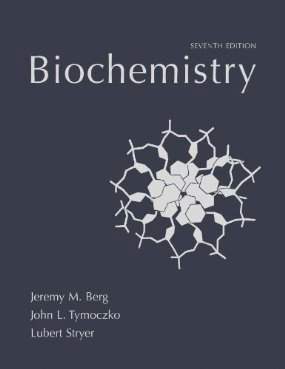Connecting...

For more information, please see full course syllabus of Biochemistry
Biochemistry Sequencing Larger Peptides & Proteins
Another way to determine the identity of the N-terminal amino acid of a protein uses the reagent 1-fluoro-2,4-dinitrobenzine to tag and label the terminal acid. When larger proteins need to be sequenced, they must be broken down into small fragments and then sequenced via the Edman degradation. Protease enzymes like trypsin, pepsin, and chymotrypsin can break peptide bonds adjacent to particular amino acids, as can chemicals like cyanogen bromide. Once the fragments have been sequenced, another protein can be broken down by a different enzyme, which will chop it up in a different place. This can be compared to the other sequence to identify the proper order of the fragments. Disulfide bonds responsible for protein folding can be broken using performic acid or dithithreitol plus iodoacetate.
Share this knowledge with your friends!
Copy & Paste this embed code into your website’s HTML
Please ensure that your website editor is in text mode when you paste the code.(In Wordpress, the mode button is on the top right corner.)
- - Allow users to view the embedded video in full-size.










































 Answer Engine
Answer Engine




0 answers
Post by Michael De La Rosa on November 20, 2021
Hello Prof. Hovasapian. Great Lecture.
I am a little confused about what the actual wet-lab procedure for sequencing long chains of Amino Acids is. According to my understanding of your lecture the steps are as follows:
1. Break the Disulfide bonds
2. Fragement the long chain with one of the hydrolyzing reagents (enzyme or chemical)
2.1 Sequence the fragments with Edmon degradation
3. Fragment a copy of the long chain with a different hydrolyzing reagent
3.1 Sequence the fragments with Edmon degradation
4. Treat Fragments with FDNB
5. Combine information and deduce sequence of Amino Acid chain
Now, what is confusing me, is step 4. If we treat the solution of the A/A fragments with FDNB, wouldn't that label all the N-terminal A/As of all the fragments?
Towards the end of your lecture you walkthrough a practical application of this sequencing method, however, somehow you've managed to only label the first A/A of the chain with FDNB? This deviates from what I think you said was the order of sequencing, earlier in the lecture.
Can you help me sort out the real-life wet lab procedure?
Thank you.
1 answer
Mon Jan 7, 2019 6:24 AM
Post by Anthony Villarama on January 5, 2019
Professor Raffi, unfortunately, this lecture did not do a good justice. I was so confused.
3 answers
Mon Jan 15, 2018 5:26 AM
Post by Swati Sharma on December 21, 2017
Dear Dr Raffi
Could you please clarify t me the difference between separation of the fragments versus sequencing the fragment. I know that we can determine the sequence of the fragments versus Edmans, but what is the difference between
1) Separation of the fragments
2)Hydrolysis of the fragments
3)From the sequence of the fragments. Is Hydrolysis same as separation? Please let me know I am lost on this
Respectfully
Swati
2 answers
Last reply by: Swati Sharma
Thu Dec 21, 2017 8:43 PM
Post by Swati Sharma on October 4, 2017
So Dr Rafi I am still very much confused between the edmans degradation nd the sangers reagents the 2 4 dinitro benzene. So it goes like the following :first we take the intact protein, we break the disulfide bonds via perfromic acid then we unfold the protein and arrange it in a linear fashion. You said we can also treat the intact protein with the sangers reagent to determine the n terminal of the amino acid and that would be our first amino acid. We use 6 molar of HCL to get the free amino acids so that they are countable. Now after that depending upon the different types of amino acids present we use enzymes to cleave them and we get the fragments with that first enzyme. Then again we take the whole peptide and cleave it with the second enzyme and get the second fragment.
Now I am confused here, you said we now determine the sequence( What do you mean by the term sequence ??) Does it mean order ? so we determine the sequence of amino acids in the fragments via Edmans Degradation , but I thought that Edmans degradation was also used to identify the N terminus of the amino acid by using phenylisothiocynate , so edmans is used for identifying the n terminus and 1 floro 2 4 dinitrobenzene is also used for identifying the n terminus? So basically what is the difference between Edmans degradation and ! Floro 2 4 Dinitrobenzene followed by 6M HCL
Could you please clarify I am really confused after listening the video two times and taking notes I don't understand the difference, besides that I understand everything. Respectfully, Swati
Could you please explain more briefly what do you mean by That Edmans is used to determine the sequence of fragments why not Sangers?
2 answers
Last reply by: Billy Jabbar
Thu Mar 6, 2014 1:25 AM
Post by Billy Jabbar on March 5, 2014
@Marsha I would imagine the Sanger Reagent (which chops up the entire peptide to individual amino acids) is incredibly wasteful and requires more product than Edman's Reagent (which removes only the first amino acid leaving the rest of the peptide intact). Since both help determine the same thing (the first amino acid of the sequence), if I had to guess -- I think most biochemists would opt with Edman's Reagant.
---
Dr. H
I have two questions regarding the reagants you mentioned for removing disulfide bridges. My first question is in regards to Performic Acid (a strong oxidizing agent) -- wouldn't it also oxidize the sulfur on methionine amino acids? Secondly, for the second reagant mentioned (the thiol reducing agent), would basically any mercaptan reagant work? My instructor frequently uses 2-Mercaptoethanol.
Thanks!
1 answer
Tue Sep 24, 2013 1:28 AM
Post by Ziheng Wang on September 22, 2013
Sir, why don't we just do the Edman degradation to find out first say twenty elements instead of using Sanger's reagent?
1 answer
Sat May 25, 2013 12:32 AM
Post by marsha prytz on May 24, 2013
I'm slightly confused, if we are using the E. degredation to sequence the protein large or small, wouldn't that give us the sequence of the amino acid chain? Why would we need to break them up into fragments also?